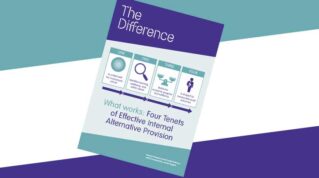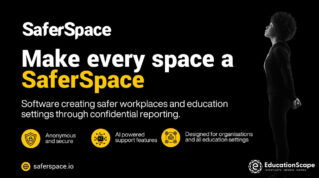For the past 20 years and in various roles with national education charities I’ve had the privilege of working with young people in a variety of environments, from alternative provisions to homelessness. This experience has given me a broad range of insights as to the challenges our young people face and the multi-faceted and complex pressures schools and teachers are under and it informs my work to design and scale solutions that can create real and lasting change in young people’s lives.
St John Ambulance led the charge for making first aid mandatory in schools with its ‘Every Child a Lifesaver’ campaign. As a result, first aid has been part of the curriculum in England since 2020, but we want to go a step further. Our vision is for every student to be first aid competent by the time they leave school.
Why? From our perspective, it is quite simply a vital skill for them and their communities. But what does it mean to them to be able to save a life?
Exploring this in depth revealed some surprising answers. Taking our cue from these, we have gone on to develop a very different youth programme, unlike any other St John has ever run.
With funding from the People’s Postcode Lottery’s “Recovery Fund” to address educational inequalities, social exclusion and isolation in under-served communities, we set ourselves the challenge of identifying and delivering in and for communities where we had limited interaction. In particular, we wanted to reach the young people from these communities.
Launched in March, the Young Responder ‘street first aid’ programme includes three main topics: street violence, physical first aid and mental health first aid awareness. Based on the priorities and areas of need they identified in responses to our research, its curriculum aims to teach a generation of young people lifesaving street first aid skills from how to deal with spiking or a stab wound to supporting friends affected by drink or drugs. It
The Young Responder programme is free for schools
Unfortunately, the answer was an overwhelming and resounding no when we asked them whether they would know how to respond to any of these situations. Yet it is a sad fact that for many these issues and emergencies are a reality and relatively prominent in their lives.
Knife crime makes headlines across the UK, and ONS statistics reveal 99 young people aged under 25 were murdered with a knife or sharp object in the 12 months up to March 2022. Meanwhile, spiking makes fewer headlinesbut it is increasingly common and deeply problematic. And Schools Week readers won’t need to be told the scale of the mental health epidemic they face.
Young Responders began rolling out to schools in London, the West Midlands and the north east. We chose these locations for three reasons: all three suffer high levels of knife crime, young people themselves told us they wanted us there, and because we could reach and train young people to deliver it.
All of our facilitators are from areas of deprivation, were at risk of becoming NEET or of becoming victims of street violence themselves. And their sessions have been incredibly well received, not just for what the young people get from them but for what it empowers them to do for those around them.
We want to empower more young people just like that, and to do that we need more schools to work with us to get more young people first aid-competent.
To that end, the Young Responder programme is free for schools (as well as some other community partners). Our facilitators are well trained, highly engaging and well resourced, with videos, scenarios, practical activities to put their skills to the test, and question and answer opportunities throughout.
Schools are already doing more than should be asked of them to combat society’s ills and support our young people. We hope this initiative will help them to support more young people to support themselves and each other in the face of so many challenges.












Your thoughts